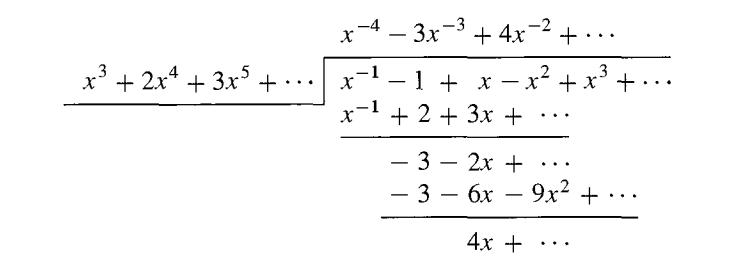let (Q((x)) have the ordering described in Example 25.9. List the labels a, b, c, d, e
Question:
let (Q((x)) have the ordering described in Example 25.9. List the labels a, b, c, d, e of the given elements in an order corresponding to increasing order of the elements as described by the relation < of Theorem 25.5.
a.
b.
c.
d.
e.
Data from Example 25.9
(Formal Laurent Series Fields) Continuing with the idea of Example 25.8, we let F be a field and consider formal series of the form ∑i∞=N aixi where N may be any integer, positive, zero, or negative, and ai ∈ F. (Equivalently, we could consider ∑i∞= -∞ aixi where all but a finite number of the ai are zero for negative values of i. In studying calculus for functions of a complex variable, one encounters series of this form called "Laurent series.") With the natural addition and multiplication of these series, we have a field which we denote by F((x)). The inverse of x is the series x-1 + 0 + 0x + 0x2 + • • •. Inverses of elements and quotients can be computed by series division. We compute three terms of (x-1 - 1 + x - x2 + x3 + •. •)/(x3 + 2x4 + 3x5 +•••)in R.((x)) for illustration.

If F is an ordered field, we can use the obvious analog of Plow in R[[x]] to define an ordering of F((x)). In Exercise 2 we ask you to symbolically order the monomials • • • x-3 , x-2 , x-1, x0 = 1, x, x2 , x3 , • • • as we did for R[x] in Example 25.6. Note that F((x)) contains, as a subfield, a field of quotients of F[x], and thus induces an ordering on this field of quotients.
Step by Step Answer:






